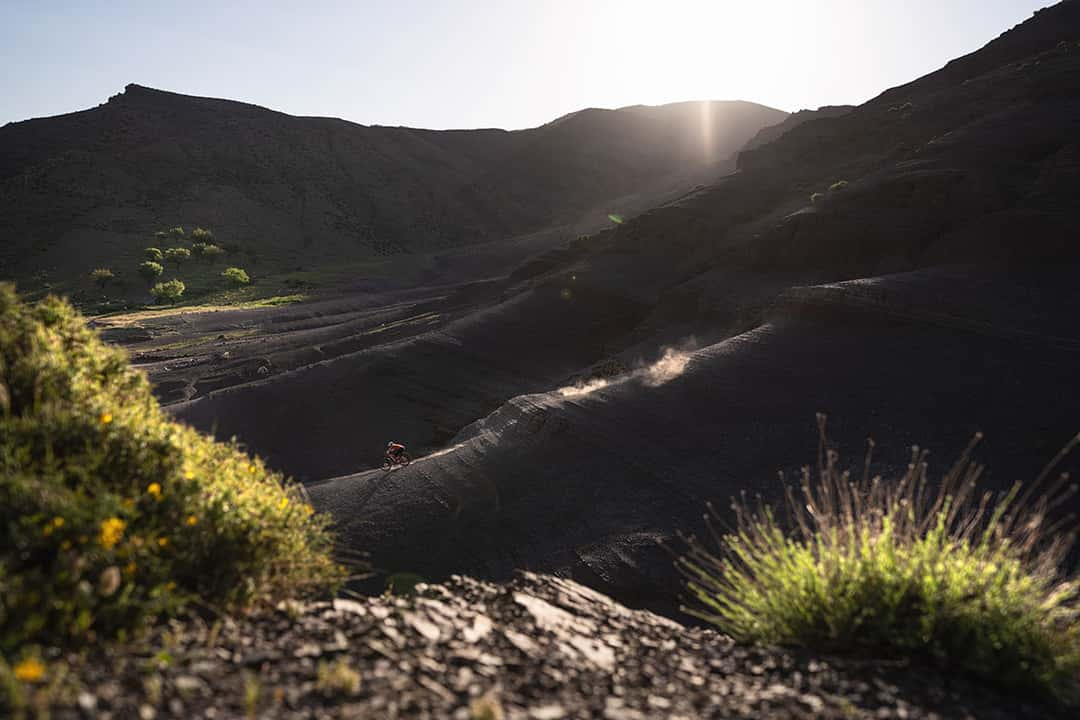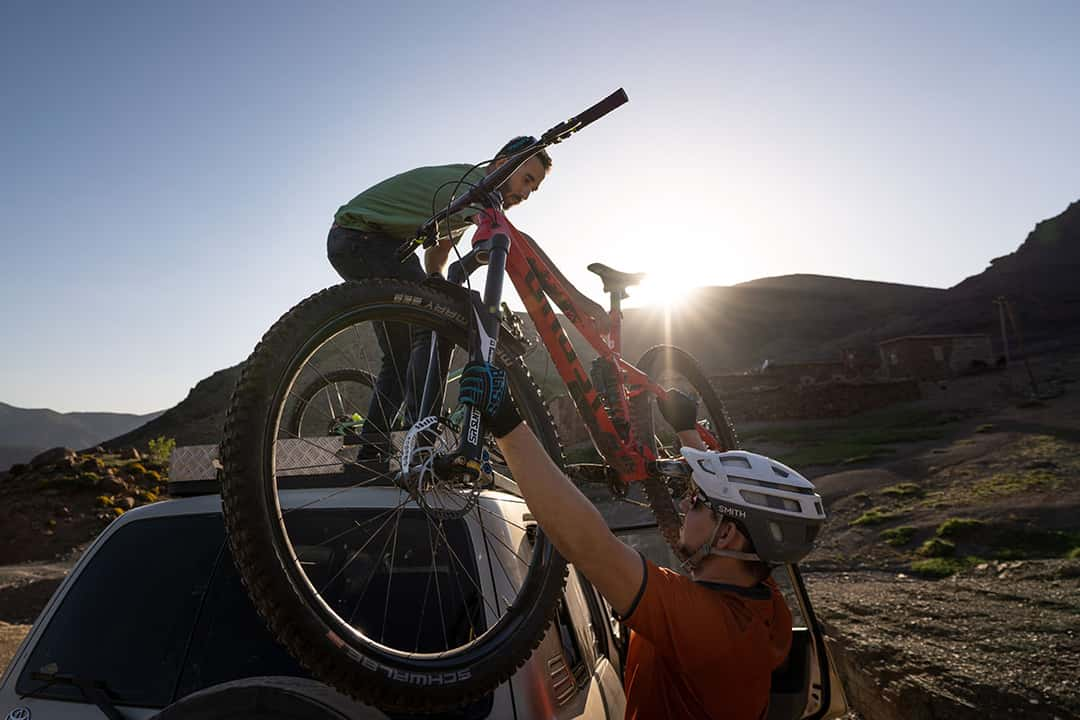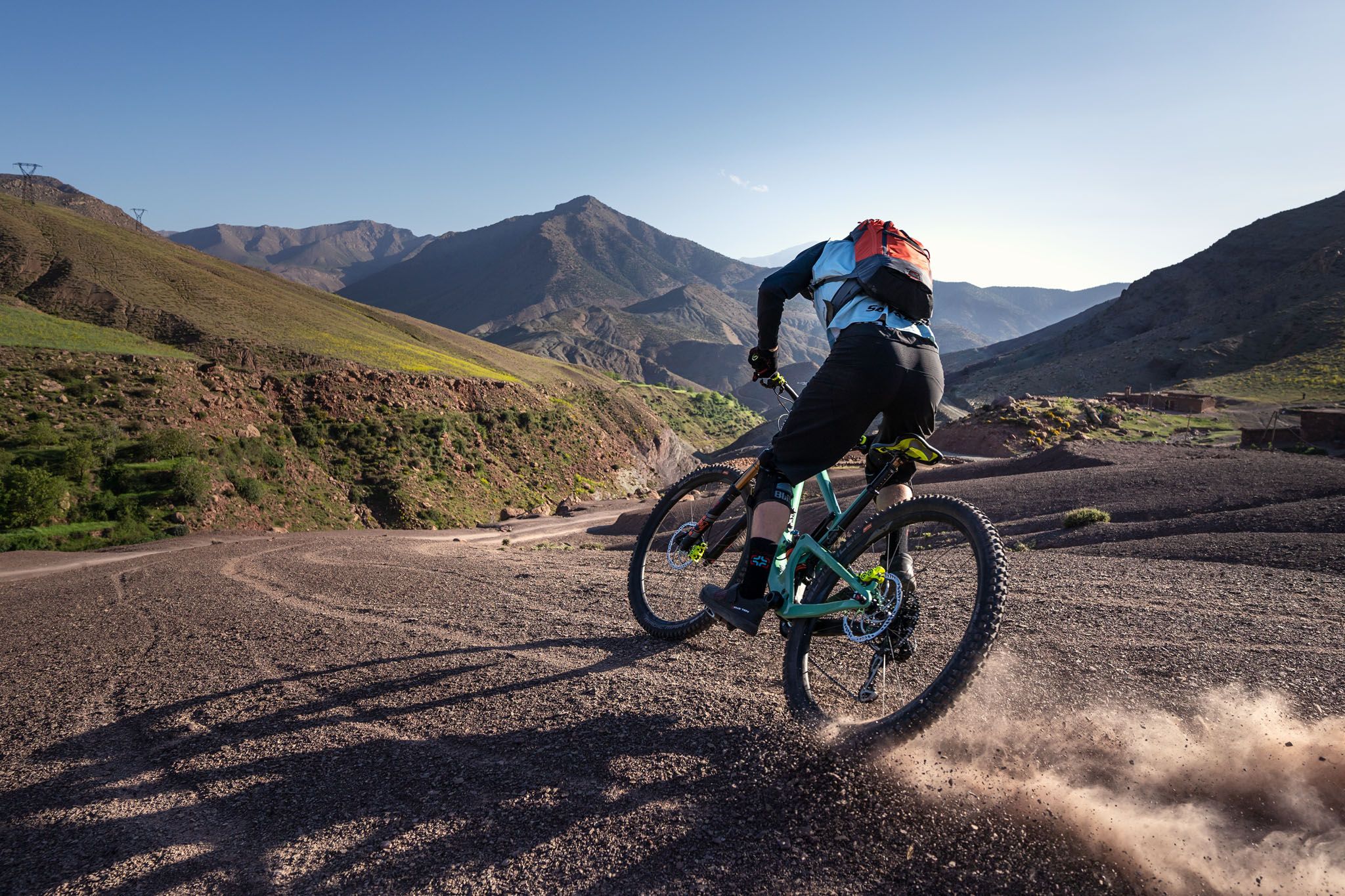Compact and professional on the road: Professional photographer Philip Ruopp travels to Morocco with light luggage. With the new Tamron-Duo 17-28mm F/2.8 Di III RXD and 28-75mm F/2.8 Di III RXD he realizes a mountain bike shooting in the scenic Atlas mountains.
Outdoor and sports photography is a dream job for everyone who likes to discover new locations. When Philip Ruopp talks about his daily work, every listener is bound to rave. He travels more than six months a year - and knows almost every corner of the globe.
Whether a mountain biker in the South American Andes, a surfer in the Portuguese Algarve, or an adventurer in rainy Scotland - the professional photographer from Laichingen knows where his protagonists can be optimally staged. And with every trip, there are new and rewarding photo spots. His latest insider tip is Morocco, where he recently photographed two friendly bikers against the beautiful backdrop of the Atlas Mountains.
Vibrant big city
"Morocco was a white spot on my world map, so I was curious to see what awaited me there photographically," Philip says. To get in the mood for the country and its people, he and his team spent a few days in Marrakesh. "For me as a passionate outdoor photographer, this vibrant metropolis was an exciting new experience. The medieval medina with its colorful alleys and bustling souks is a dream come true for every photographer".
![Action in the Atlas - Mountain Bike Shooting with Tamron's new E-Mount lenses]
Philip was particularly impressed by the city's central market square. The Djemaa el Fna has been part of the immaterial cultural heritage of mankind since 2008 and a visit is a must for every Marrakech visitor. "There is an incredible atmosphere here, which culminates every evening in a thrilling spectacle with jugglers and musicians between the countless food and sales stalls," reports the photographer. "Especially fascinating: the next morning the huge square is swept like empty again. Nothing reminds us of what happened here the night before until the first stands are set up again in the afternoon".


Compact Equipment
Philip has photographed the colorful hustle and bustle with his Sony DSLM and two of the new Tamron zoom lenses for the E-Mount: the 17-28mm F/2.8 Di III RXD and the 28-75mm f/2.8 Di III RXD. "This combination is unbeatable in terms of image quality and compactness," says Philip, who used to travel with a professional DSLR and the correspondingly large lenses. "As a professional, I place great emphasis on high optical performance and reliable operation. There used to be no way around SLR equipment," says Philip. That has changed in the meantime. Six years after the introduction of the first mirrorless system camera with a full-format sensor, the size of the equipment is no longer a quality criterion for him.

Easy-to-use lens duo
Philip appreciates the lower weight of the DSLM camera and the ease of use of the two Tamron lenses. "Until now, the profitable, fast zoom lenses with open aperture F/2.8 were still relatively large and heavy even for the compact system cameras. Tamron shows with the 17-28 and the 28-75 that there is another way".

In fact, the two powerful zoom lenses together weigh just under a kilo - less than half the weight of the two comparable DSLR lenses. "Added to this is the handy design," adds Philip. "Both E-Mount lenses are approximately the same in terms of dimensions and have the same filter diameter of 67 mm. In practice, this brings real advantages, because now the two lenses together with the filter fit into the same pocket in which I used to carry only one lens, which was heavier on its own. The new Tamron E-Mount lenses are a real relief, especially for outdoor shootings that often involve long walks or climbing tours."
Thrilling perspectives
Philip was particularly taken with the ultra-wide angle zoom lens 17-28mm F/2.8 Di III RXD, which allows an extra large image angle of up to 103 degrees. "This allows me to create images with gripping perspectives and incredible depth," he says. "It's particularly suitable for shots where the beauty of the landscape is to be shown to its best advantage.
The pictures from the Atlas Mountains show what he means by this. Philip photographed the bikers on their rapid descents in the most beautiful evening light. "The pistes were dry as a bone and the riders were accordingly fast. This speed was a real challenge for the autofocus. The closer I am to the action with the wide angle, the faster the motif distance changes. If the drivers were twenty meters away, they are only an arm's length away in the next moment."



Fast autofocus with RXD motor
Philip worked with continuous autofocus (AF-C) and was surprised at how quickly the RXD (Rapid eXtra-silent stepping Drive) stepper motor of the lenses focused. "Unlike a DSLR, the mirror-less lenses use an ultra-fast hybrid autofocus that alternates between phase and contrast measurement depending on the subject," explains the professional. "This brings a noticeable advantage in practice.
The Atlas Mountains also place physical demands on people and materials. Flying stones, dust, and heat provide demanding conditions. "Once I'm in photo mode myself, I honestly don't think much about my equipment. Sometimes I'm surprised myself what cameras and lenses can withstand," says Philip and laughs. "Obviously Tamron has done a great job and the rugged body is well sealed against dust and moisture. We didn't have a single failure and even the zoom and focus ring worked perfectly despite the dusty environment. By the way, the hard fluoride coating on the front lens is also practical, which I was able to clean quickly every now and then without having to worry about a scratch."
The result of the shooting is razor-sharp pictures of the athletes in front of a fantastic hilly landscape. "I was really surprised how beautiful Morocco is, even away from the big cities," Philip admits. "The conditions in the atlas were ideal for us - both for mountain biking and for taking pictures.
Further information
Tamron 17-28mm F/2.8 Di III RXD
Tamron 28-75mm F/2.8 Di III RXD
Philip on Instagram
Because transparency is important for us: This article was sponsored by Tamron Europe and we would never feature something that we wouldn't use or recommend ourselves.





Comments (3)